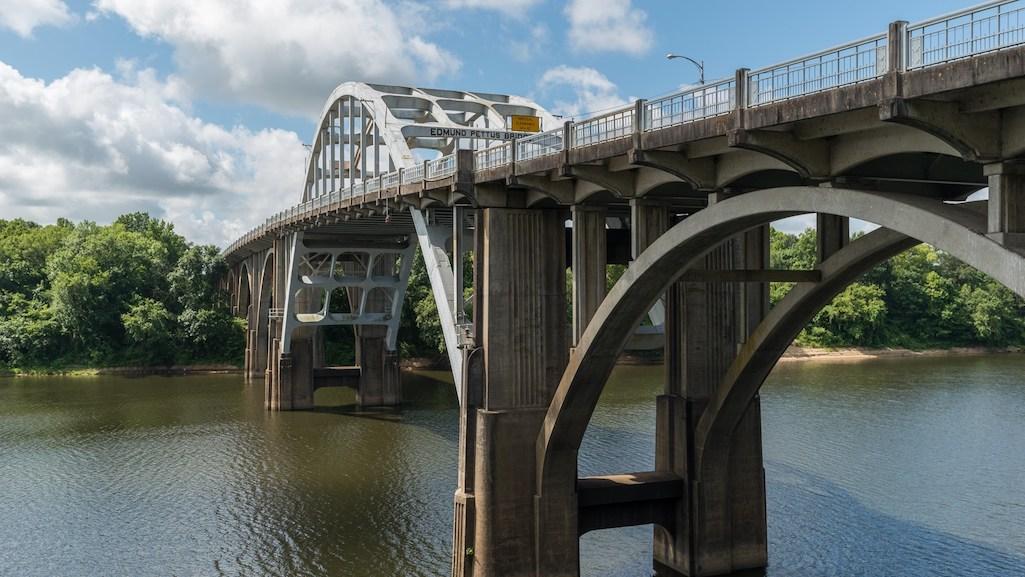
A new visitor center is coming to Bering Land Bridge National Preserve in Alaska/NPS file
Editor's note: This corrects that the National Park Foundation is supporting, not driving, the fundraising drive for a visitor center at Katahdin Woods and Waters National Monument.
Changes in visitor desires and habits, technology, and even interpretation are driving efforts to redefine the national park visitor center for the 21st century.
From Bering Land Bridge National Preserve in Alaska to the Selma to Montgomery National Historic Trail in Alabama, work is underway in a small handful of park units to create "a 21st century visitor experience," said Alicia Leuba, the National Park Foundation's vice president of resource management.
"We're looking at this in a variety of ways, but providing that visitor experience, that improved visitor experience, is the key part of what we're doing," she said during a phone conversation this week. "We are currently in the middle of six or seven visitor center projects ... and the role that visitor centers are playing in visitor experience at those specific parks.
"For example, we are working with the National Park Service on the Selma to Montgomery National Historic Trail, and our work around that initiative includes the visitor center, but it's also much larger than that. For example, we helped acquire properties near the [Edmund] Pettus Bridge to help expand the footprint of the visitor experience in Selma," continued Leuba.
"We're working not only to help revitalize the current visitor center through increased and new digital programming uses of storytelling, but we're also supporting the design and execution of a new voting rights and leadership center there, which will, we think, provide an opportunity for visitors and scholars from around the world that can come and learn about how that area was so instrumental in voting rights and civil justice," she added. "That's a situation where we're raising money from private partners and really helping to move the Park Service's investment to a level of excellence."

Improvements to the visitor experience on the Selma to Montgomery National Historic Site are aimed at developing a world-class facility for the study of civil rights. Edmund Pettus Bridge photo by DXR, CC BY-SA 4.0, https://commons.wikimedia.org/w/index.php?curid=50267861
There have been concerns voiced in recent years that some park visitor centers have slipped a bit in the interpretation and education they offer visitors. There also is a growing desire by the Park Service to be more inclusive with Native American tribes in telling their stories from landscapes within the National Park System. And there are some parks that simply lack visitor centers.
At Katahdin Woods and Waters National Monument in Maine, for example, the Foundation is supporting a campaign to raise millons of dollars to build a "welcome center." Currently, park staff distribute park information and trip-planning assistance from late-May to mid-October from a desk located inside the Patten Lumbermen's Museum in Patten, Maine, more than an hour's drive from the monument.
How to define the 21st century experience for park visitors evolved from "the visitor experience survey, looking at trends in visitation, what types of visitors are coming to the park, where the park interpretations can be meeting the needs of our increasing visitorship right now, and how it may be improved, looking at where technology is really needed to tell a more inclusive story," said Leuba.
At Bering Land Bridge, she said, "[I]mprovements and enhancements to that [existing] visitor center there helps them kind of change their focus to a more cultural interpretation, and an interactive and relevance narrative up there. And that's being done in partnership with multiple tribes and neighbors, and all of the partners in that area. It will include not only kind of a physical improvement and enhancement, but also an enhanced interpretive experience as well."
Of course, visitors to Bering Land Bridge likely are expecting a different interpretive experience than, say, those to Vicksburg National Military Park in Mississippi, where the Foundation is involved in "reimagining" the visitor experience at Champion Hill Battlefield.
Too, the age of the visitor can affect the approach to interpretation.
"What's interesting is that we've been able to break down and see that, for example, millennials and international visitors are the areas projected to have a higher rate of growth. We also know that there are probably only a couple of dozen parks that will actually kind of bear the largest growth burden. So how do we help prepare those parks for the evolving need of visitors, and targeted to make sure that we're doing what we can to provide an excellent visitor experience?" the Foundation official said. "This is work that we do in partnership with the National Park Service. We're looking both nationally, but also at specific parks where it's warranted, so that we have a better understanding of what the needs are there so that when you get to design and construction phase, we are thinking long term and sustainable, and about how we will evolve."
The parks where the Foundation is working to improve the visitor center experience were identified by Park Service officials. With that information in hand, Foundation staff sought out partners to help finance the projects.
While Bering Land Bridge does not come immediately to mind as a park overflowing with visitation — indeed, it has been averaging less than 3,000 visitors a year for some time — Leuba said the Leona M. and Harry B. Helmsley Charitable Trust, which has invested millions of dollars in visitor center projects, including $4.4 million at Bering Land Bridge, was interested in that park.
"Their investment there is a difference between a decade's old interpretive, educational, and visitor space, and something that can truly engage the visitor, both while you're in the park but also before you come and when you leave, and how they're talking about the culturally relevant and inclusive narrative, which really is an opportunity to update that," she said.
Another park that is benefitting from the Trust is Badlands National Park in South Dakota, where a brand new visitor center is being built at Cedar Pass inside the park. It's expected to provide "visitors with more opportunities to learn about Badlands National Park's natural, cultural, historical, and recreational resources; improve scientific study and understanding of its unique paleontological and geological resources; and help people connect with the past and present history, culture, and heritage of the Oglala Sioux Tribe and Lakota People."
Details on the specific interpretive exhibits and materials planned for the visitor centers, and how they will be delivered to park visitors, were unavailable from the Foundation.


